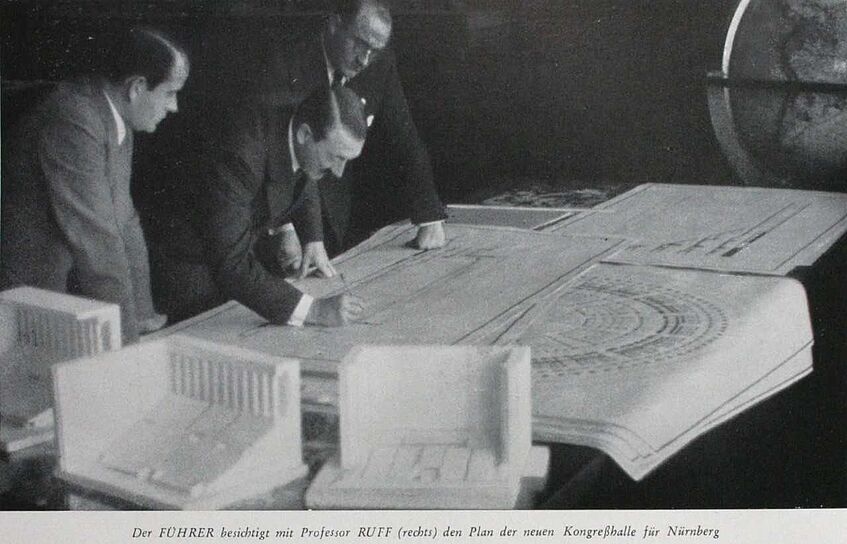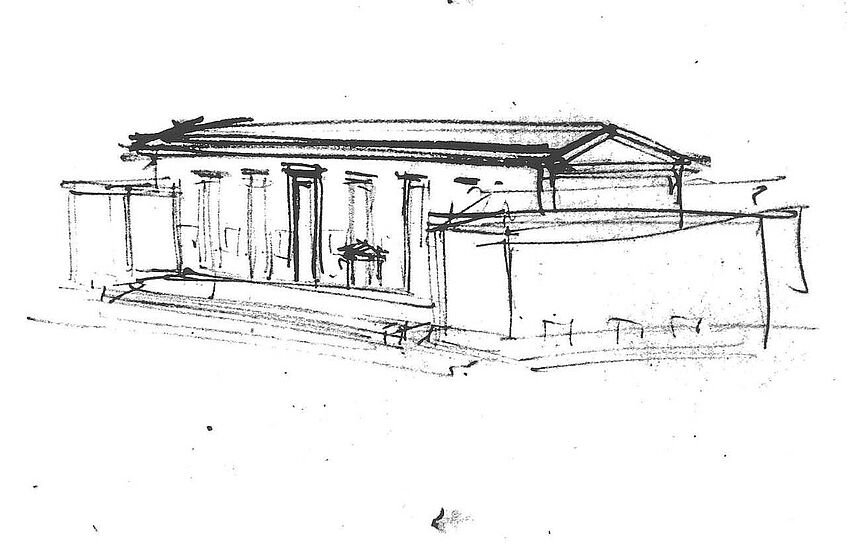Adolf Hitler as an "Architect": Dictator and Dilettante
Hitler's personal involvement in the architecture of National Socialism
Jubiläumsfonds project (December 2020 – November 2023)
Raphael Rosenberg (PI), Ingrid Holzschuh, Winfried Nerdinger, Timo Nüßlein
The project investigates Adolf Hitler's personal involvement in the architecture of National Socialism. His interest for and contribution to buildings exceeds by far examples of other historic rulers. He was on the one hand a builder launching big projects representing his dictatorship, commissioning architects and forcing – e. g. by decrees – their realisation; on the other hand an architect making own designs, giving his architects exact graphic and verbal specifications and often correcting their drafts with his own hand. Hitler's role as a builder has not yet been coherently investigated, his activities as an architect were not yet analysed.
This project contributes to better understanding the NS regime, as for Hitler architecture was an important instrument of representation and exercise of power. It is also important for the comprehension of Middle European architecture of the 1930s/1940s where Hitler’s involvement played an essential role.
We compile and analyse Hitler's statements on architecture in general and on specific building projects and approximately 260 architectural sketches by his hand. Half of them are yet unpublished. We prepare a critical catalogue of those sources and investigate:
1. Hitler's architectural perceptions and their changes from his youth in Linz and Vienna, to the years in Munich up until the end of WWII as architectural planning remained a privileged leisure activity for the dictator.
2. The cooperation between Hitler and “his” architects. Both in the development of the design for buildings and on the administrative level, where Hitler set the architects at the top of new authorities giving them immense power to realise their work within the existing cities.
3. The way Hitler understood and implemented the representative architecture as a political instrument for and carrier of NS ideology.
Funded by the Jubiläumsfonds of the Austrian National Bank (No. 18601).



